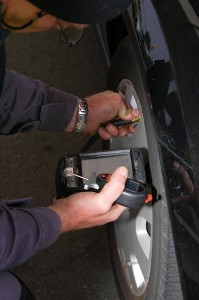 Happy holidays from everyone at Nitronomics! Hope everyone had a safe and wonderful Christmas/Hannukah/Kwanzaa, and see you in 2013!
Happy holidays from everyone at Nitronomics! Hope everyone had a safe and wonderful Christmas/Hannukah/Kwanzaa, and see you in 2013!
This is a guest post from Scott Grayson.
It is no secret that our reflexes slow down as we age. Psychologists and other researchers have determined that as we age, our cognitive ability to consider our surroundings and make appropriate decisions slows down significantly after age 65.
Many gerontologists and psychologists today believe we can train our brains to improve our response times. After reviewing data from a University of Kentucky study on brain games and aging adults, Dr. Susan Whitbourne, Ph.D., said the results showed it is possible to “overcome the effects of aging on the mind and body through exercise, practice, and just plain determination”. Another encouraging finding of the study was that improvements were still evident two years after participants discontinued brain-training activities.
Aging Affects Older Drivers
Just slowing the deficits that naturally come with aging is a phenomenal benefit for older citizens who want to remain engaged in an active lifestyle. Recently, new benefits are available to older adults who take an active role in monitoring their personal-response times.
Jerry Edgerton, a columnist and contributor for CBS News, reported on pilot programs targeted at older drivers sponsored by coverage providers. The pilot programs engaged older drivers in brain-training exercises designed to improve the peripheral-vision field, thereby improving response time and reaction to dangerous-driving conditions. Insurance companies are responding positively to the pilot studies.
Lower Premiums
Along with the benefits of lower rates through brain training, companies offer tips to keep your good-driving record. Drivers should take an active role to ensure they enjoy vehicle insurance discounts.
Here are a few tips on how you can ensure that you are maintaining safe driving habits while holding onto your right to stay on the road.
- Drive the speed limit – Too slow is just as dangerous as too fast.
- Keep informed about current laws – Watch for new stop lights and speed-limit changes in your town.
- Take a driving course designed for people over the age of 55 – Courses are available online and in a classroom setting in most areas.
- Evaluate your car for comfort and function – Be sure the car is not too large or two small, check for blind spots, adjust your seat for the best vision field around you.
Use Tools for Aging Drivers
It might seem as if it’s a sign of getting older to use anti-lock braking systems and lane-departure warning systems, but not a sign of weakness. Age offers experience and intelligence and the appreciation for safety, which is why AAA offers anti-lock braking systems at a special discount to the elderly.
Another handy tip to keep in mind is filling your tires with Nitrogen. Popular Mechanic’s Mike Allen suggests that since Nitrogen is less likely to migrate through rubber than oxygen, keeping air pressure in a tire that is filled with Nitrogen will be stronger for a longer period of time, which cuts the likelihood of having to change a flat tire in half.
These safety tips are designed help drivers of all ages practice safer driving habits while on the road. If you are considering a new car, make this part of your discussion with the sales agent. Contact your policy agent or auto dealer for information about your car’s technology. Understanding how these systems work will offer you a safer and, in the end, a more enjoyable driving experience.
Aging drivers over the age of 65 will become the largest driver pool in our nation within 15 years. Finding ways to improve their safety on the road, while working with their waning reflexes, means a safer driving experience for them and everyone else who shares the road with them.
 We’ve done out best to bust nitrogen tire inflation myths and other arguments against the practice. Some of these arguments are understandable and logical, but others are just plain wacky. These wacky arguments skew the discussion because some people may believe them, leading them to thinking nitrogen tire inflation is a scam because nitrogen tire dealers and providers are making wild claims about the practice. Not only are dealers and providers not making these claims (we can’t speak for the mechanic or the salesperson, but we assure that those who sell the equipment aren’t making these claims), but these claims are just wrong. Here are a few them that we found and would like to bust right now:
We’ve done out best to bust nitrogen tire inflation myths and other arguments against the practice. Some of these arguments are understandable and logical, but others are just plain wacky. These wacky arguments skew the discussion because some people may believe them, leading them to thinking nitrogen tire inflation is a scam because nitrogen tire dealers and providers are making wild claims about the practice. Not only are dealers and providers not making these claims (we can’t speak for the mechanic or the salesperson, but we assure that those who sell the equipment aren’t making these claims), but these claims are just wrong. Here are a few them that we found and would like to bust right now:
As for moisture, changes in humidity affect tire performance two ways. First, the density of humid air fluctuates more with temperature than that of dry air, so removing humidity can keep your tire pressure more consistent, especially when the temperature climbs over 100 degrees Fahrenheit. That may be a legitimate concern in Formula One racing, but it’s not much of an issue if you’re just tooling around town. – The Straight Dope
The density of humid air has nothing to do with tire performance. Humid air is bad for your tires because it is humid, because the water vapor is very susceptible to temperature changes and causes the tire pressure to fluctuate. This also happens at temperatures below 100 degrees Fahrenheit because as you drive, you heat up the tires, no matter what the temperature is on the outside. They’re moving, there’s friction, and all that creates heat. All this is a concern if you’re just tooling around town, because tooling around town creates heat as well, and the water vapor in your tires is still reacting.
Another claim I’ve seen is that since nitrogen is slightly lighter than air, you’ll save weight and get better performance. However, we’re talking about a weight difference of less than 4 percent of the gas in the tire – in other words, a difference of less than an ounce for most vehicles. – Also The Straight Dope
We have no idea who said this, but the better performance from nitrogen doesn’t come from saving weight. It comes from the fact that nitrogen maintains proper tire pressure for a longer period of time, and its the proper tire pressure that creates better performance and handling.
The argument for using Nitrogen in your car tires is this: Air and Nitrogen would compress at different rates depending on temperature, with air being more squishy than Nitrogen, and that would cause your tires’ pressure to vary more with air than with Nitrogen. – Scienceblogs.com
More squishy? What does that even mean? Just because this argument is coming from a science blog doesn’t meant that it’s scientifically sound.
Proper inflation is the real issue. Under-inflated tires reduce gas mileage. They flatten out, creating more surface area and thus adding friction, which makes the engine work harder. The extra friction, and resulting heat, also increases the chance of a blowout. A properly inflated tire is always safer and more efficient than under-inflated shoes (unless you’re driving across a sand dune). – The Truth about Cars
If only it were this simple. Since air-filled tires are much more susceptible to temperature changes, there are chances for an inaccurate reading when checking the tire pressure of an air-filled tire. For example, if a consumer stops at a gas station after spending some time running errands and driving around, and decides to check their tire pressure, it’s likely that they’ll get a reading that is higher than what the tire pressure really is. The reason is the tires have been heated up from the previous driving,
This could mean that the consumer gets a reading that says their tire pressure is fine, or is too high, and will do nothing about a tire that’s really low or will make it low by releasing pressure to compensate for the high reading. This is why it’s recommended to check tire pressure when the tires a cool, such as before starting the car or after being parked for a few hours. Since tire pressure ought to be checked when the tires are cool, this means that tires would need to be refilled at home with an at-home air compressor (since most people would have to drive to the gas station to get to their air compressor, heating up the tires and ruining the reading).






